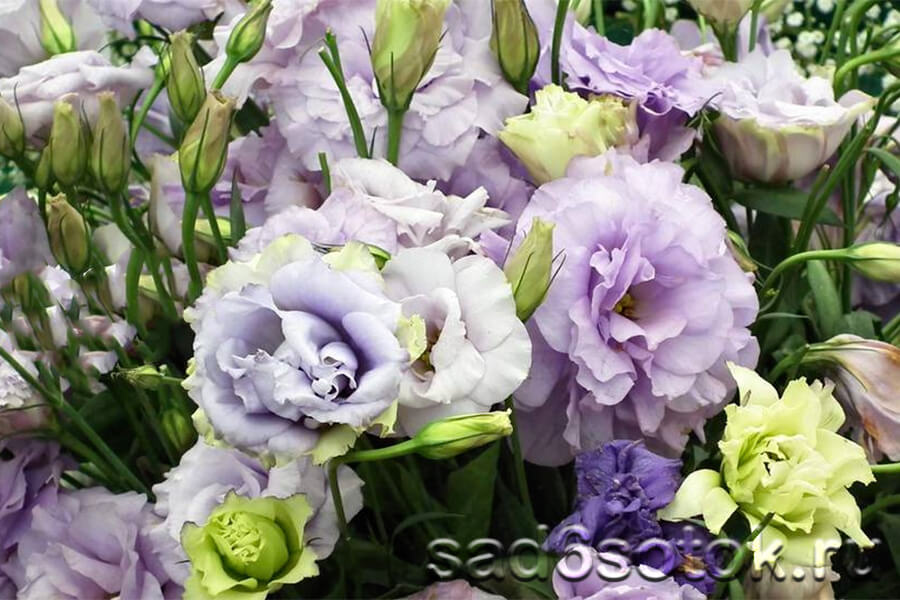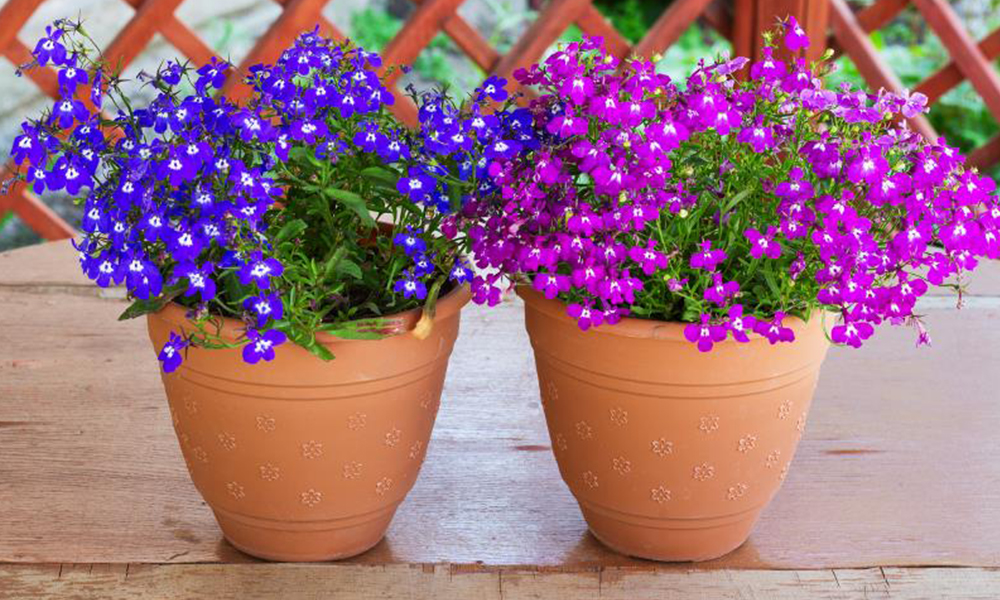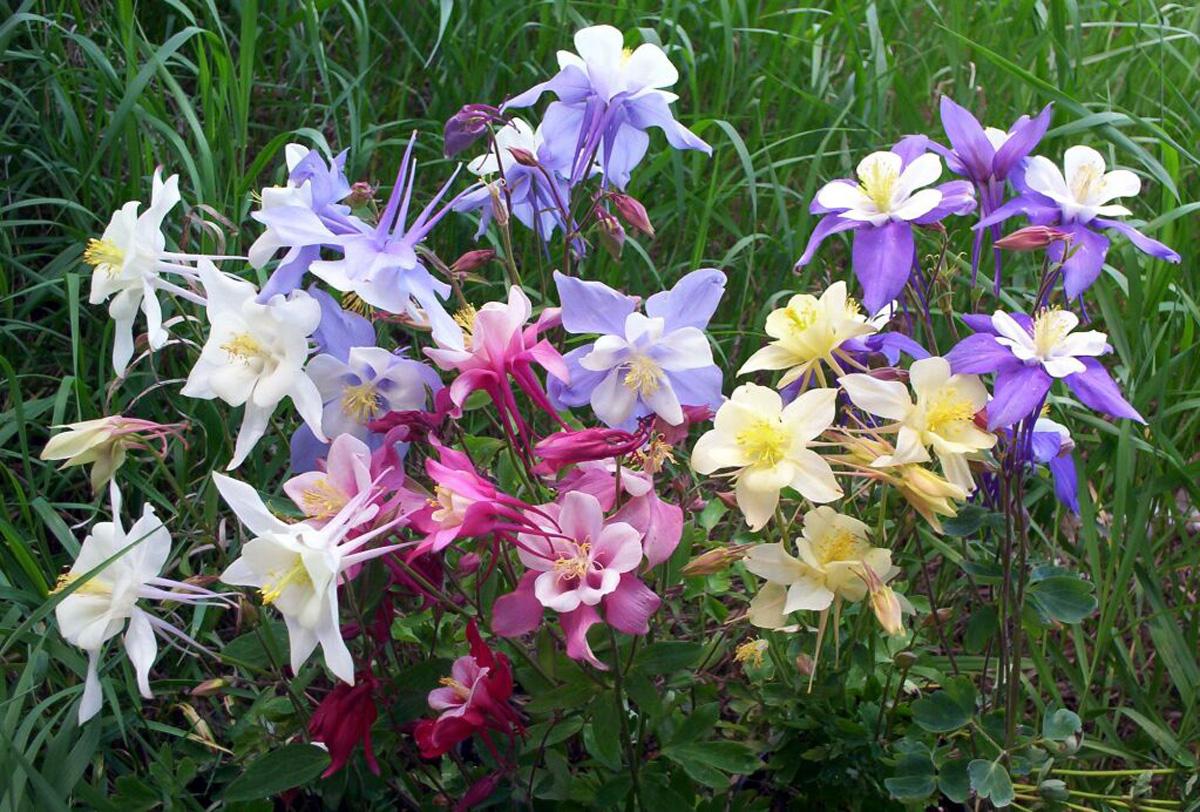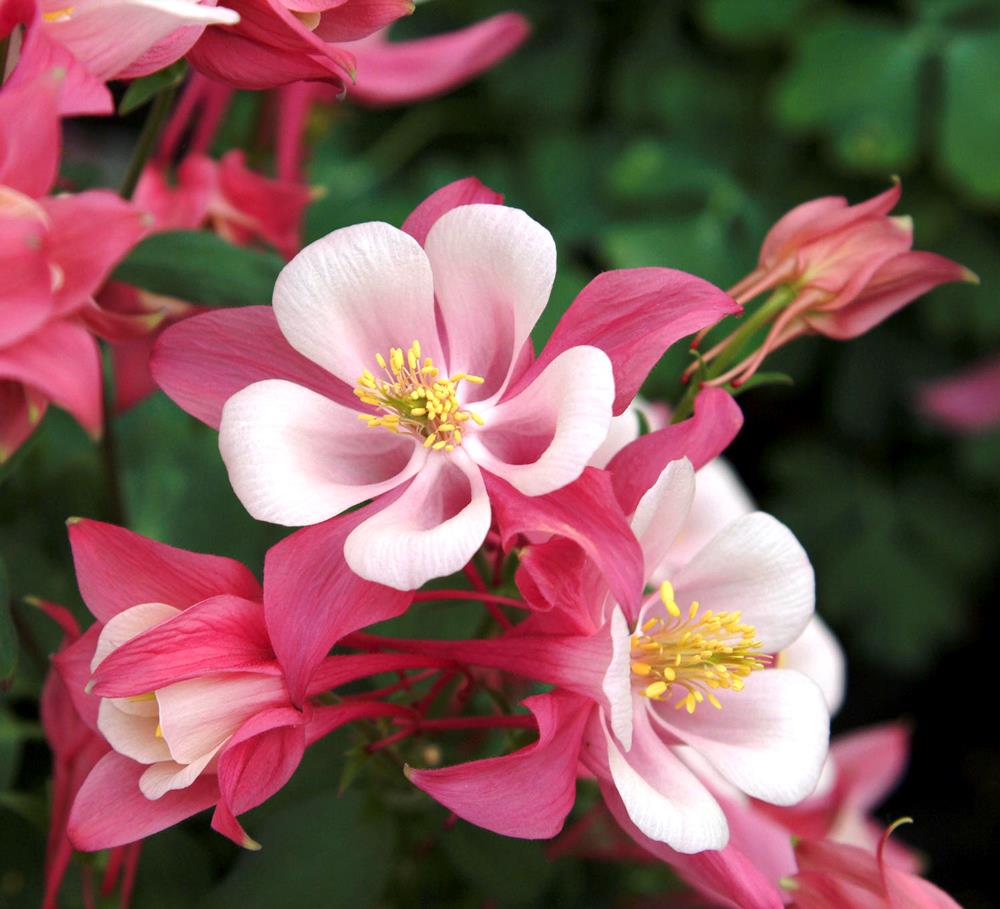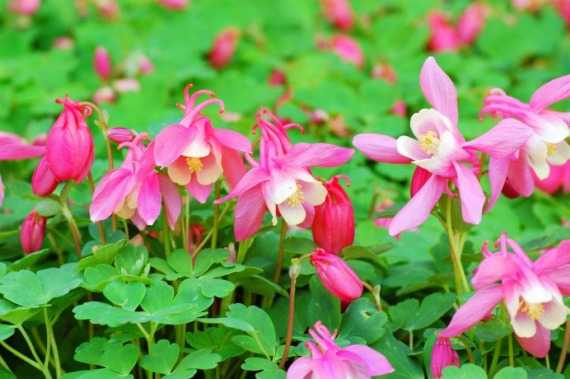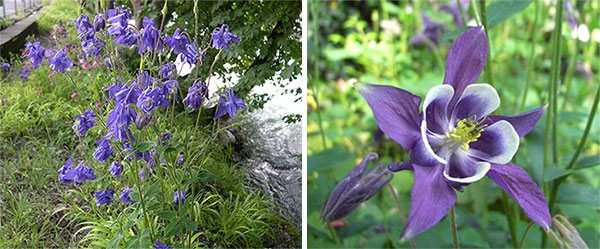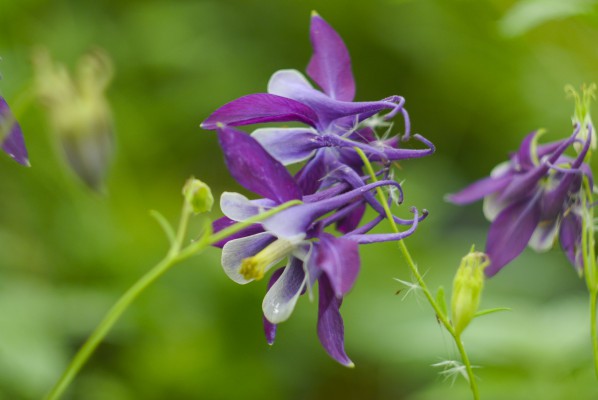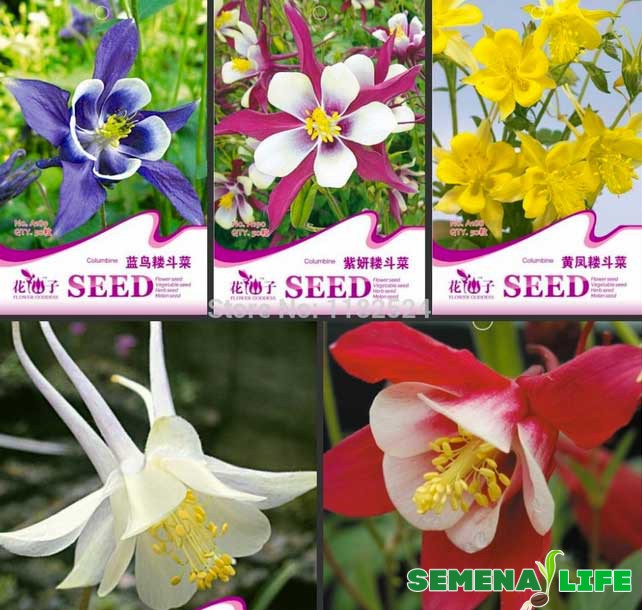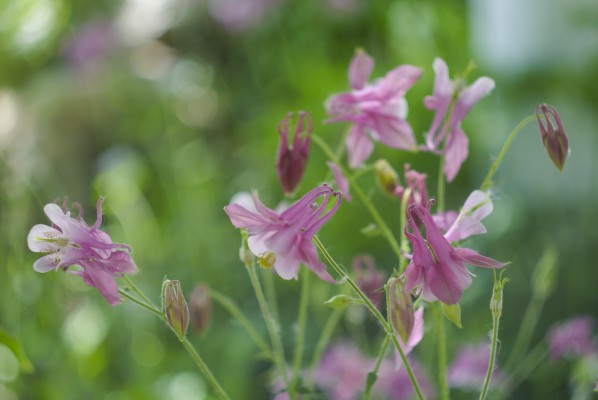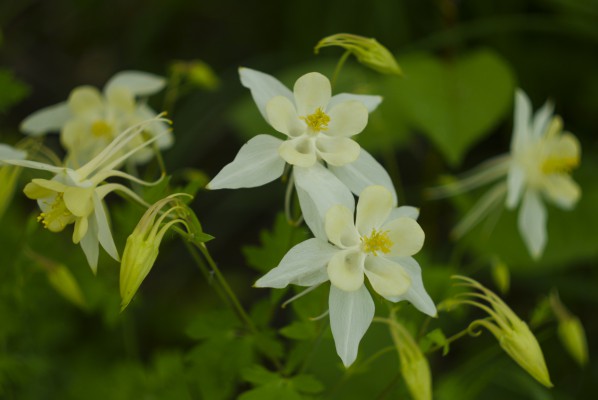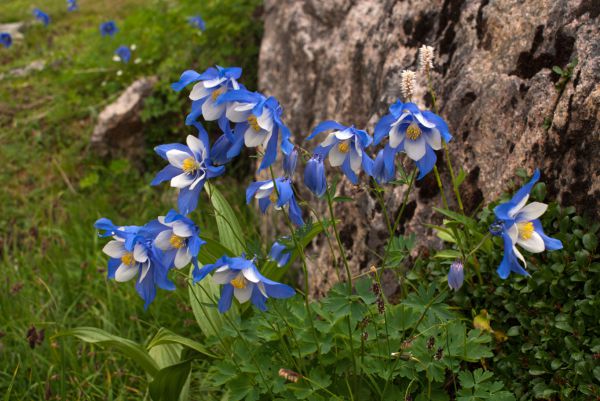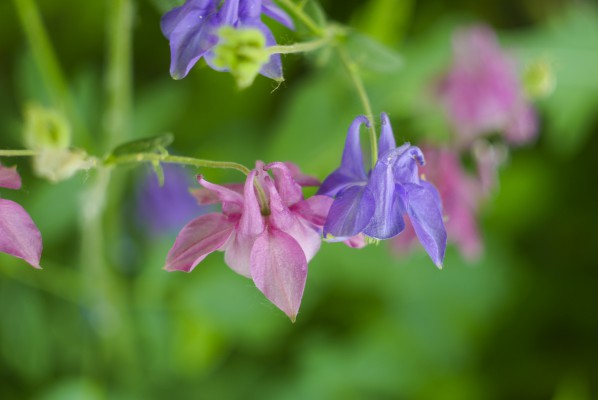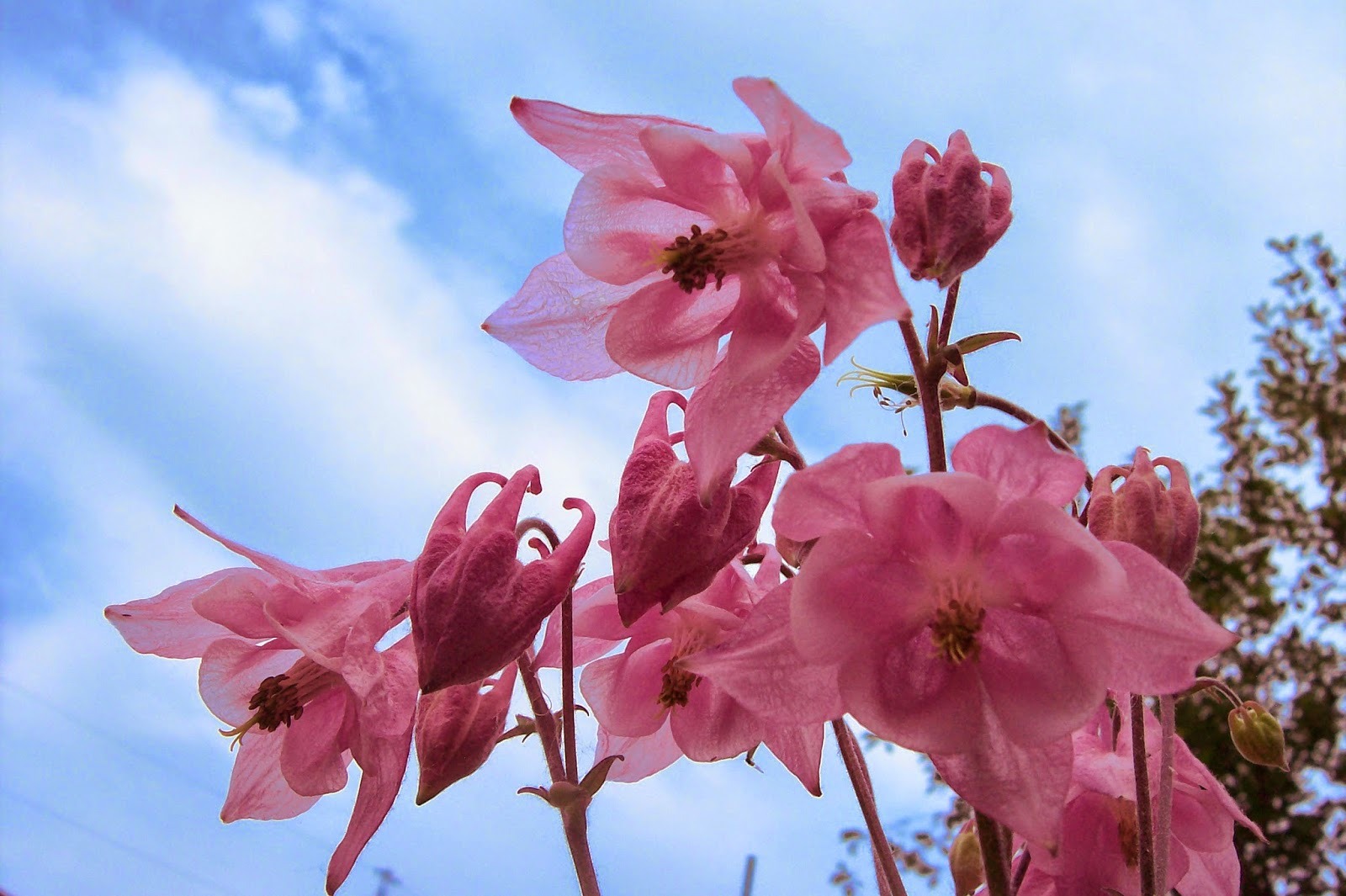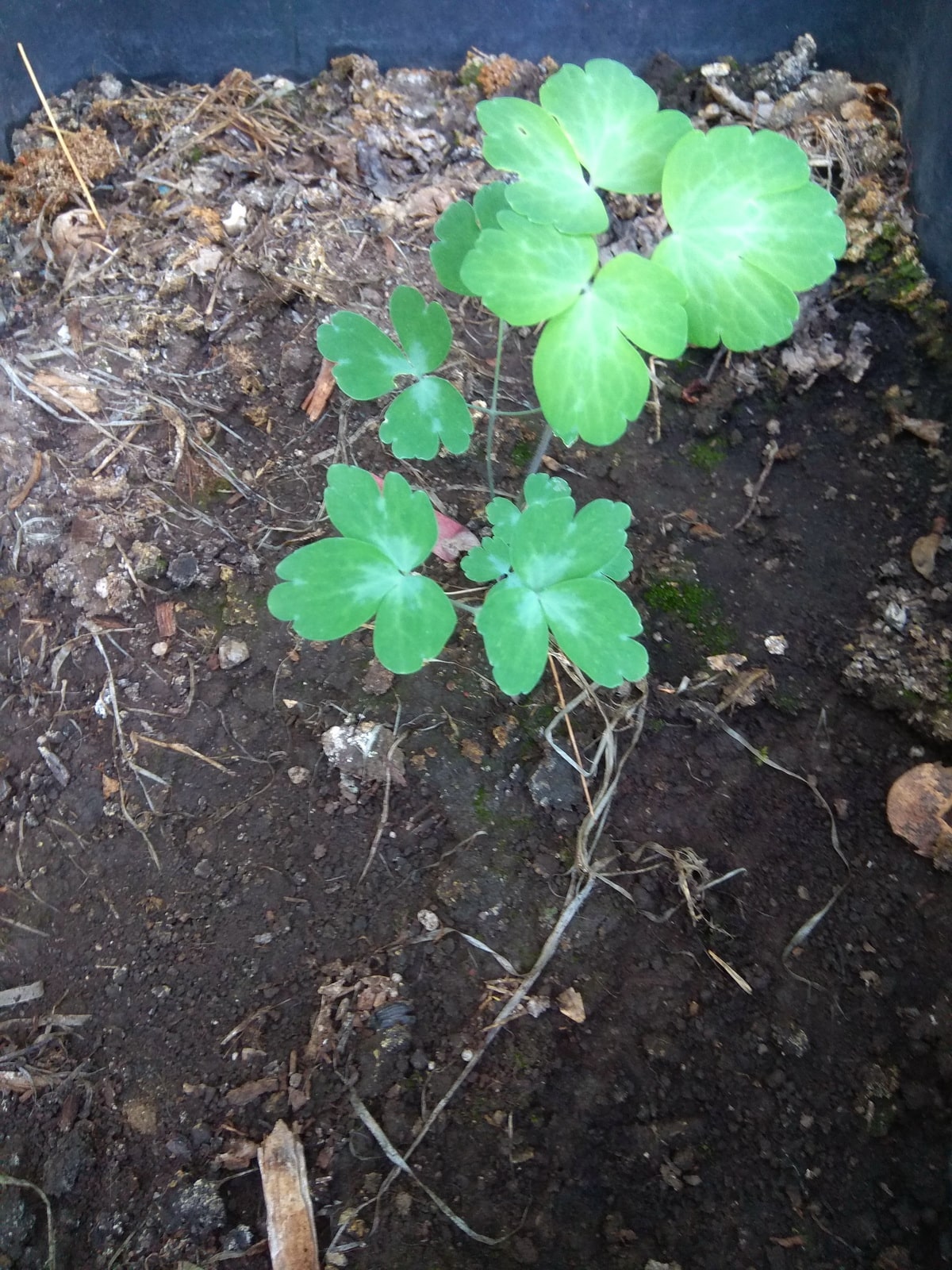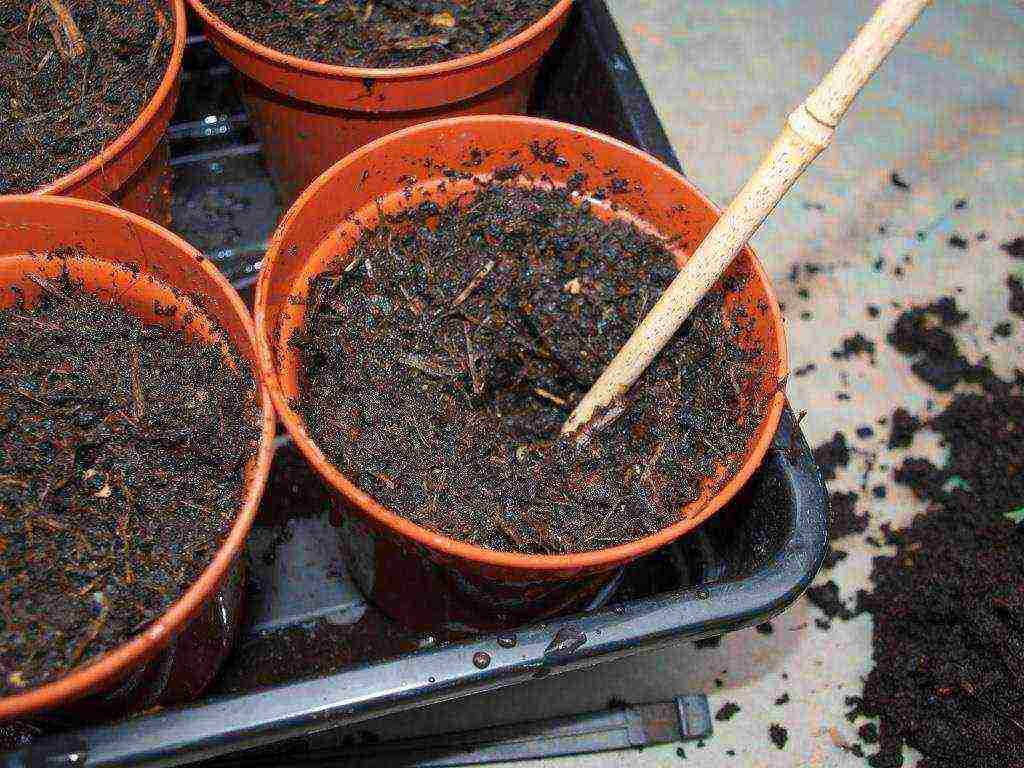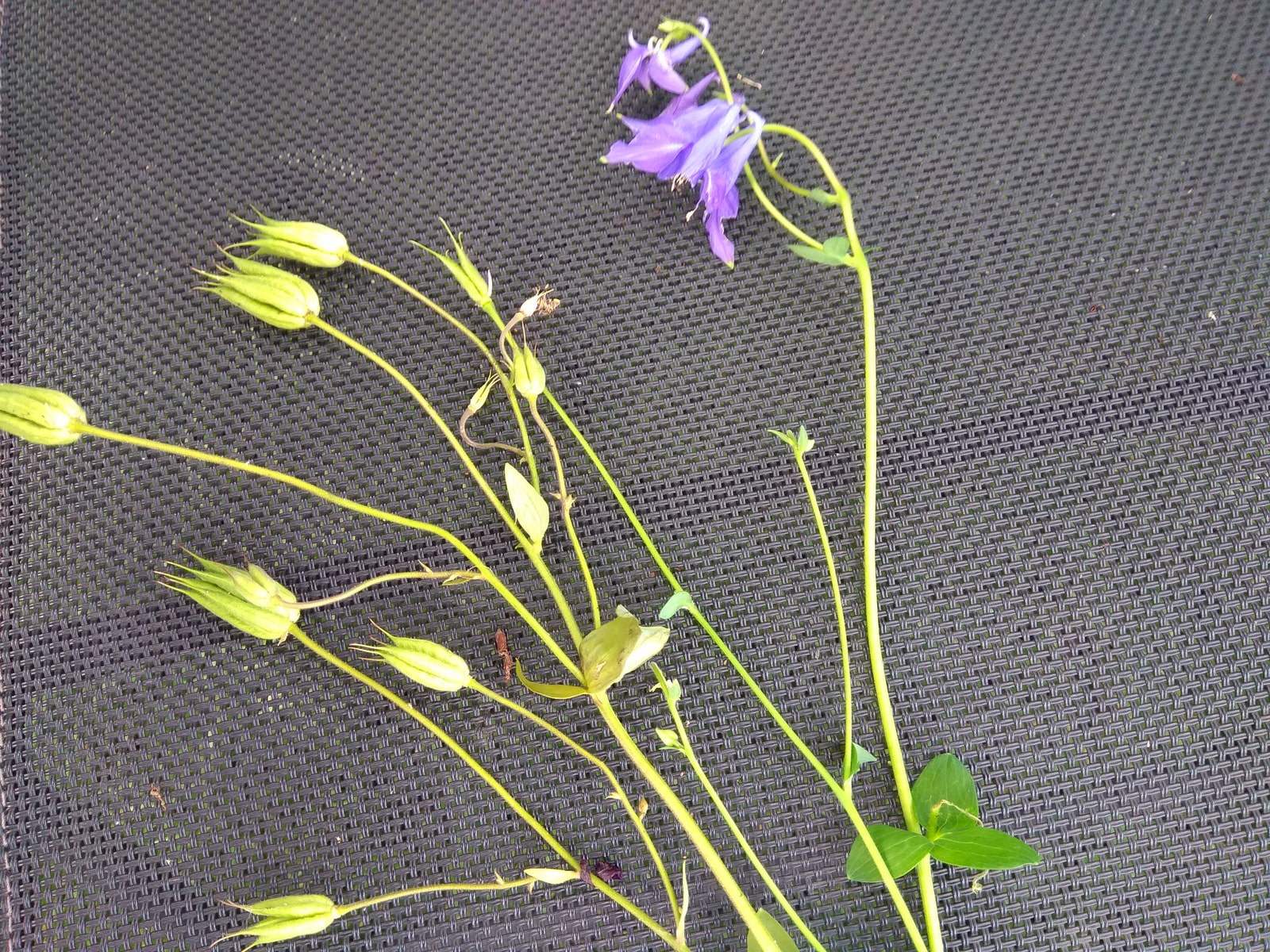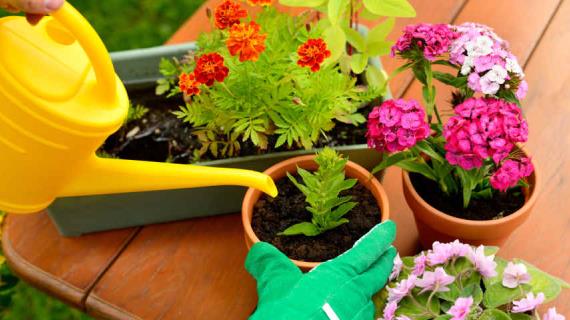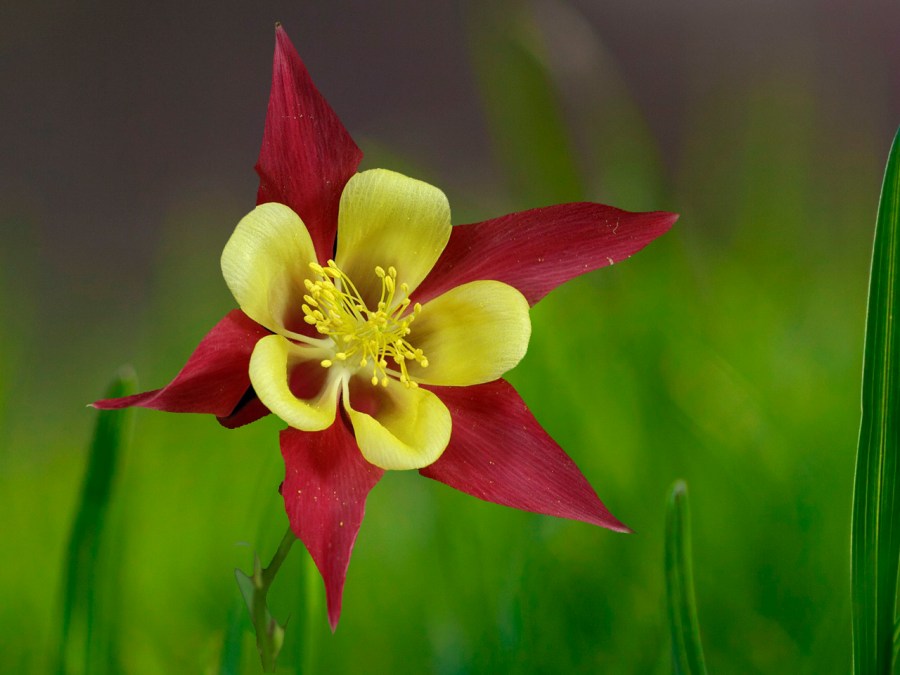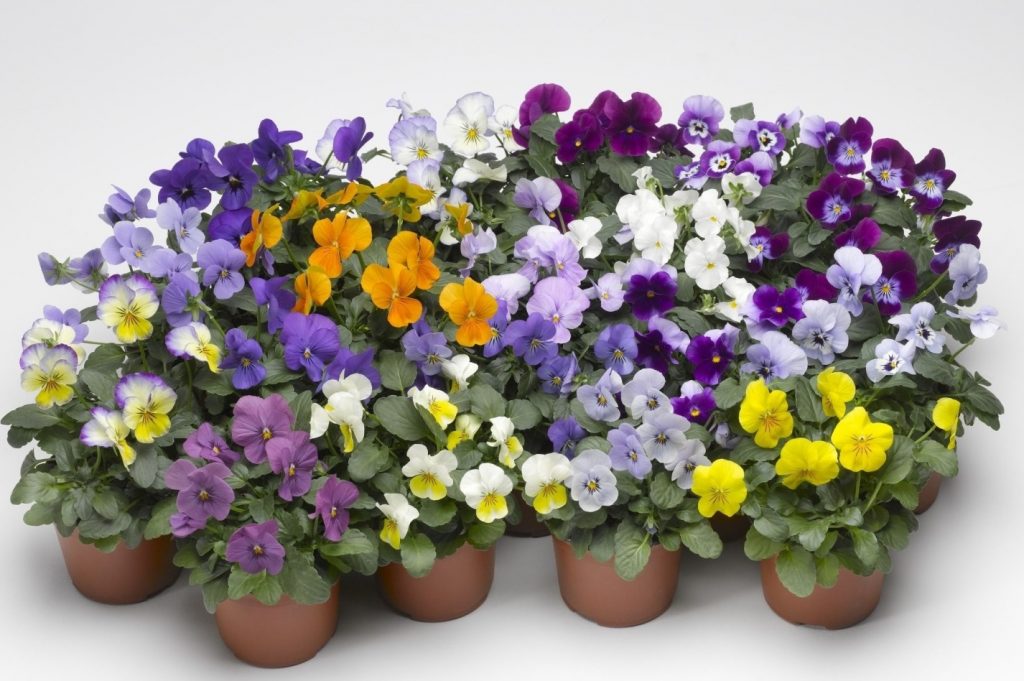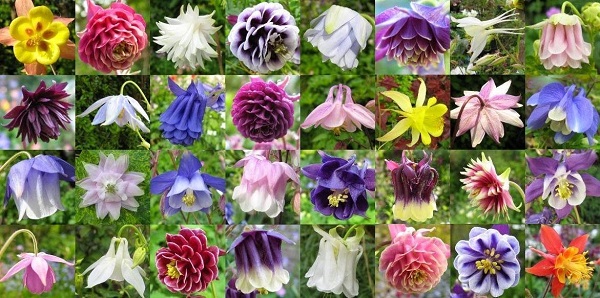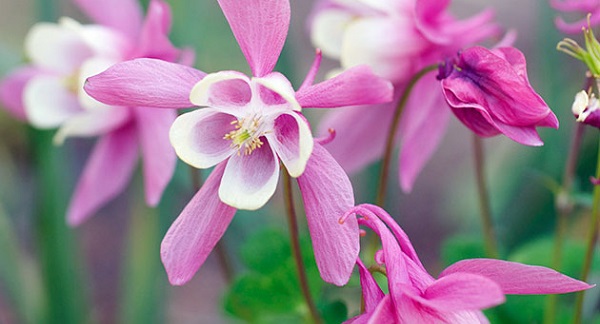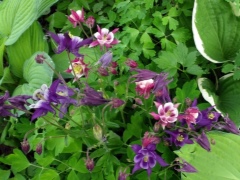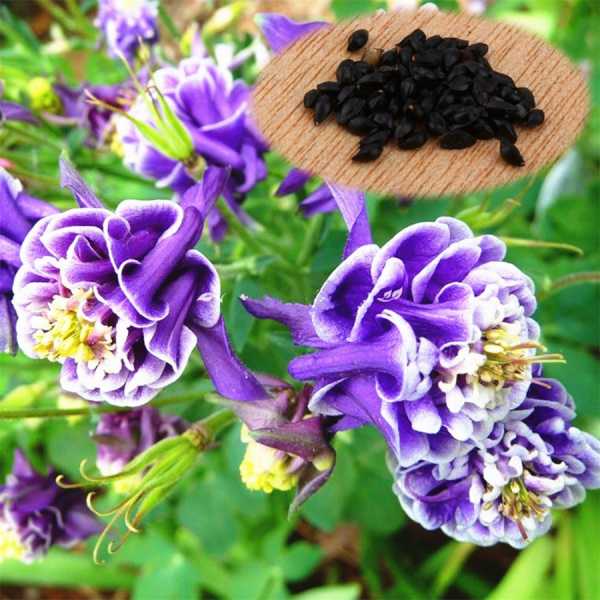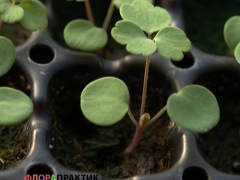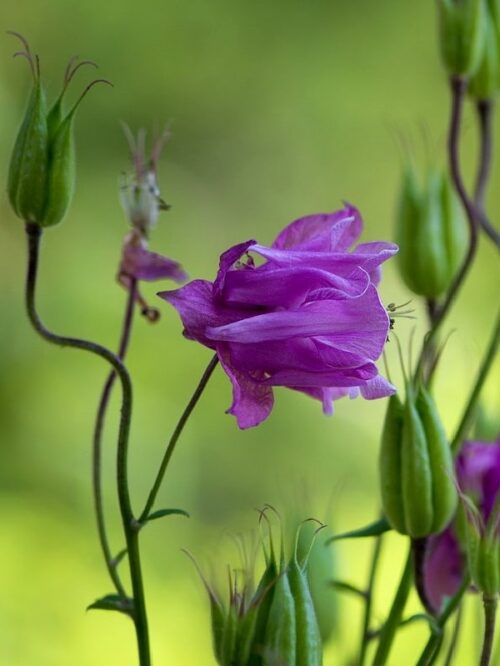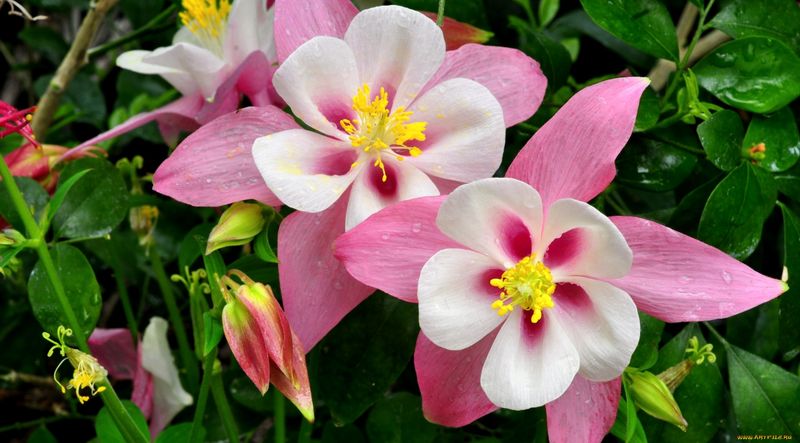Aquilegia - growing from seeds
The main difficulty in cultivating an eagle or a catchment (under these names aquilegia is known among the people) lies in the very poor germination of seeds. After two months of storage, only half of them germinate, and the sowing material of last year's collection must be stratified before planting. When breeding aquilegia from seed at home, half of the success lies in the right timing for sowing. There are two options:
- Autumn planting... If you have freshly harvested seed at hand, it makes sense to try out the winter sowing of an eagle. This is the simplest and most productive way of reproduction of the aquilegia plant, growing from seeds, when it can be planted as early as 1.5-2 months after harvest, sowing directly into the open ground. The rest of the care will be postponed until spring, when seeds that have successfully wintered under the snow and germinated will hatch from the ground.
- Spring planting... If it is impossible to plant before winter for some reason, it is worth giving preference to the seedling method. At the same time, the duration of the collection of inoculum is not decisive, since before sowing it will undergo stratification, and, if necessary, scarification.
When to sow aquilegia for seedlings?
The timing of planting aquilegia for seedlings is chosen based on the fact that the seedlings by the time of planting in open ground (mid-May) should get stronger, acquire a pair of real leaves, but not stretch too much, otherwise the acclimatization process runs the risk of going through with complications. When to plant aquilegia when grown from seed? The ideal time for sowing the catchment in seedling boxes is in March, but preparatory work (stratification, scarification) begins a month before that - in early February or late January.
Aquilegia seed stratification at home
Experienced growers recommend using one of two ways to stratify aquilegia seeds:
- Cold stratification... The washed seeds are mixed with disinfected (oven-calcined) clean sand, moistened and placed in a cold place for 30 days. As a source of cold, you can use both a vegetable box in the refrigerator and a regular snowdrift. Alternatively, you can simply store the seed at a temperature of + 10 ° C all the time from the moment of collection.
- Warm stratification... Prepared seeds (washed and mixed with wet sand) are sent for a month to a place with a temperature of + 35 ° C. Note that this method is more suitable for seeds with an underdeveloped embryo and does not give as good a result as cold stratification.
Germinating aquilegia seeds at home
During germination, both excessive heat and sharp frosts can be equally destructive for aquilegia. Optimal conditions for seed germination are: diffused lighting, temperature at + 16 ... + 18 ° C and moderate humidity. During this period, the substrate in the seedling container should provide the amount of moisture necessary for development, but not be too wet so as not to provoke the development of putrefactive processes.

Description and varieties of culture
Anise is an annual herb with a distinctive aroma. Outwardly resembles dill:
- erect branched stem 30-60 cm high;
- inflorescence in the form of an umbrella;
- feathery leaves.
It is widely used in cooking, perfumery, pharmacy. Anise is used to make:
- essential oil;
- cough drops;
- topping for bread and other baked goods;
- aniseed vodka;
- various alcoholic tinctures;
- marinades for vegetables;
- salads.
Anise is unpretentious, it can be grown in soil and as a pot culture. Having a plant at home is a suitable option for spice lovers, adherents of traditional medicine, those who do not have a vegetable garden, and simply for growers.
Growing anise at home is very convenient - the spice can be constantly used, the aroma will fill the air.
The following varieties are suitable for growing anise on greens from seeds at home:
- "Aybolit". Mid-season variety, from germination to cut 40-55 days. Grows up to 60 cm.
- "Blues". Late ripening, you can cut it 2 months after the appearance of the first seedlings.
- "Knight". Early maturing, forms a low bush. The plant is ready for cutting 23-25 days after germination.
- "Magic Elixir". Medium ripeness - 50-60 days, low.
- "Umbrella". Very early variety - 20-21 days from germination to cutting. Height - 70 cm.
Early maturing varieties are good for short growing periods, plants quickly and amicably give greens, but soon become depleted. Mid-season and late varieties are more extended in time in terms of harvest.
Transplanting aquilegia to a new location
Any kind of catchment does not respond well to movement. It can only be transplanted when absolutely necessary.
Transplants are done every five years. By this time, the flower fades away, and on the alpine hill it is necessary to maintain the density of plantings. Only young specimens are moved. If the root system has managed to go deep into the ground, then the digging procedure will damage it.
How to properly transplant aquilegia to another place:
- The earth is loosened and watered.
- The old bush is carefully dug out to apply less grasses to the root system.
- The roots are cut into several parts, so that each has 2 buds.
- The separated part of the flower is placed in a new hole.
- The soil is carefully compacted in a circle.
- Watering is carried out.
Further moistening of the soil - as the plant needs.
Any kind of aquilegia can be grown on personal plots - White or Blue Star, Columbina, Nymph. Each will help the flower garden look complete, delight the owners with its beauty and originality.
What indoor plants are best grown from seeds
Many varieties of indoor plants can be germinated from seeds, the most common options are briefly discussed below:
Sometimes called the indoor maple, Abutilon is a tropical plant with unusual leaves that give it a maple-like appearance. At home, it is able to grow up to almost 2 meters in height, the life expectancy is usually no more than 3 - 5 years, since then the plant loses its decorative effect.
Balsam is an Asian plant that is distinguished by its lushness and dense vegetation. There are different varieties that have individual colors of both leaves and flowers. During the purchase, you need to be careful, since only indoor balsam is suitable for home cultivation.
Periwinkle is especially popular due to its active and abundant flowering. Inflorescences can have a variety of colors: from white to bright pink and lilac tones, depending on the selected variety. The leaves are oval in shape, in the middle there is a characteristic colored speck.
Begonia is an unpretentious houseplant that looks very much like a rose.
To date, a large number of various varieties have been bred, differing from each other in color and structural features of the inflorescences.
Brugmansia is a beautiful and powerful plant with very large inflorescences, but precautions must be taken when growing it, as all its parts are poisonous.
Jasmine gardenia is a tropical plant that is popular for its unique delicate and double white flowers.They are perfectly combined with lush and neat foliage, which has a bright green color, so this flower will be a wonderful decoration for any room.
Dracaena is a deciduous plant that is very often used to decorate offices, but many people grow it at home too.
The leaves are distinguished by their unusual shape and color, and the crown transforms over time and turns into a stem with a dense structure, which gives the dracaena some resemblance to a small tree.
Camellia is a rather whimsical houseplant, but many growers still grow it, this popularity is explained by the unique aroma and attractive appearance of the inflorescences.
Geranium has long been a popular indoor plant, the main feature of which is to grow in height, not in breadth. Today there are various varieties that differ in color of flowers.
Primrose is well suited for lovers of violets, because it has an external resemblance to these indoor plants, but differs from them in unpretentiousness and easier care. Among the main advantages are early flowering and a variety of varieties that differ from each other in color. For home cultivation, a special indoor variety of primrose is used.
The time interval from sowing the seeds of some vegetables to planting seedlings in open ground
Eggplants and peppers / medium-sized tomatoes / standard tomatoes / tall tomatoes, respectively: in 2 months / 40-45 days / 50 days / in 2 months.
Watermelon / pumpkin / cucumbers - 20 days, strawberries (strawberries) - 2 months.
Celery / onion, respectively: 2 months / 1.5-2 months.
Early varieties of tomato
They sprout about a week after sowing. Therefore, we plant them in open ground in a month and a half. A favorable period for planting tomatoes in the garden is the beginning of June. If planted in a greenhouse, then this should be done in mid-May.
Mid-season and late varieties of tomatoes
They give sprouts for 6 days after sowing the seeds, but they should be planted in a permanent place no earlier than after 1-2 months. This period falls on the beginning of June, so the sowing of seeds should be much earlier than the early varieties of tomatoes.
Cucumbers
Their "upstarts" -growths appear already in 2-3 days. After a month, the plants are ready for transplanting to the garden bed. They are transferred to the greenhouse at the end of May, and to the garden in June.
Pumpkin
Pumpkin, squash and squash, close relatives of cucumbers, sprout 4-5 days after sowing for seedlings. A month later, they are ready to be planted outdoors.
When handling cucumbers, pumpkins, zucchini and squash, their delicate root system cannot be damaged, therefore, first you need to moisten the soil well, and then, with a large lump of earth, transfer the plants into the prepared hole.
Eggplant
They hatch for a long time. It is possible to wait for the emergence of seedlings of dark-skinned darlings only after 2 weeks. And it should be planted in the garden only after 60 days, in the month of June.
Bell pepper
This is the case with this vegetable. Pepper seedlings develop rather slowly, so it is necessary to sow them at the end of February, in order to plant them in the garden after 3 months. Under good conditions, the seedlings can even bloom even before they are transplanted into the ground.
Salad
Fans of growing it in seedlings can be advised to sow seeds at the end of May, and transfer them to the garden at the end of June.
Sowing stratified magnolia seeds in the ground
Prepare a container or crate around mid-January (depending on the number of seeds). Do not forget that there must be holes in it to drain excess water. Fill this container with a good, loose and fertile mixture. Additives of vermicompost (for nutritional value) and vermiculite (for moisture retention) are welcome.
Sow stratified magnolia seeds into this mixture to a depth of 3 cm and send the crops to a light and warm windowsill. Although light is not necessary yet. In fact, the seeds will need another two months to appear "in the light of day." And do not forget to water the seemingly empty container all this time.
Already by March 8, the first shoots of magnolia should appear, this is where light is vital for plants, so a southern window sill and artificial lighting are desirable for them.
At this stage, differences in the growth rate of different species are clearly visible. I had the fastest growing magnolias of Soulange, Lebner and obovate, large-flowered. Although, perhaps, this is due to differences in soil mixture and location (this issue is poorly understood).
And then - regular watering and, if desired, fertilizing with fertilizers for seedlings. Magnolias are quite tenacious and, with good care, grow well even in the first year. In different species, their height for the first season ranges from 10 cm to 30 cm.
Of course, the described process can be simplified by immediately sowing the seeds, without cleaning and washing into the soil mixture, and put them in a refrigerator or basement, but, as practice shows, germination will be lower. If you need 1-2 magnolia seedlings, do so, but if you are targeting a large number, then it is better to use the above and proven technology.
What to do at the end of the growing season with grown magnolia annuals? In southern regions with rare and not severe frosts, they can be safely planted in the ground, only sometimes when the temperature drops below 0, making them an easy shelter. In the northern regions, where frosts are constant in winter, planting should be delayed until spring, or better - another year, so that the seedlings get stronger. Seedlings of deciduous magnolias should overwinter at a temperature of + 0 ... + 5 degrees, it is possible without light (in the basement).
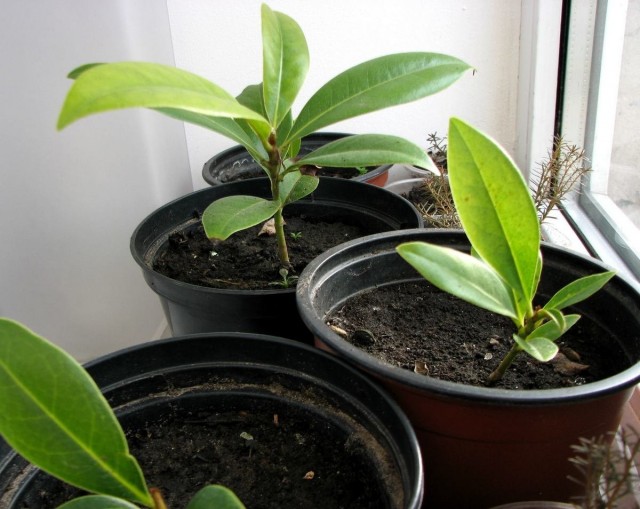 This year's magnolia seedlings. Igor Bilevich
This year's magnolia seedlings. Igor Bilevich
Blooming lavender of Crimea and its owners
When setting out to admire the lavender fields, you need to keep in mind that some of these plantings are owned by private individuals and are protected. So if you want to enjoy the view of lavender blooming in Crimea and its magical aroma, ask first if these plantings are in private ownership, and do not just find out where the lavender fields are in Crimea.
At the same time, you can negotiate with the owner of the field, who will arrange an author's excursion for a fee, tell you about the peculiarities of lavender cultivation and willingly sell a bunch of fragrant plants or a bottle of lavender oil, which can be used as a linen fragrance, fill it with an aroma lamp and even use it as perfume.
Also, lavender, sachets and lavender oil can be purchased in markets and gift shops. Lavender honey is also famous, which is credited with many healing abilities, including normalizing digestion and soothing properties. And lavender itself not only emits a pleasant and persistent aroma, but also rejuvenates the skin, soothes upset nerves and even protects against colds. So knowing where lavender grows in Crimea will help you improve your health.
When to go to admire the blooming lavender
Lavender is usually harvested in the second half of summer, but admiring the lilac veil of blooming lavender, like many other flowers, should be at the end of May or in June. With the onset of calendar summer, the scent of lavender becomes more enchanting and sweeter, but the beauty of lavender flowers cannot withstand the rays of the hot sun. They dry out and fade, although they do not lose their unique aroma.
The drier the summer, the faster the flowering season ends. So, going to admire the lavender fields in the Crimea and finding out when the lavender field blooms in the Crimea, you should also inquire in advance about the forecasts of meteorologists.
Both unexpected rains and extraordinary heat will prevent you from enjoying the beauty of a blooming lavender field, although in the latter case you can breathe in its aroma and even take away a natural Crimean souvenir with you. Of course, you can pick lavender when lavender fields bloom in Crimea if the field does not belong to anyone or you managed to negotiate with its owner.
By the way, lovers of distant wanderings, who have seen lavender fields in France and know when lavender blooms in Crimea, say that the lavender plantings of Crimea look even more luxurious and spectacular, partly due to the fact that many of them are in an abandoned state.
Unlike many other cultivated plants, lavender does not run wild, does not degenerate and does not lose its magical aroma for many years. So both the inhabitants of the Crimea and ordinary guests of the peninsula will be able to collect lavender for a long time in the once cultivated fields, even if the cultivation of lavender does not revive on the same scale.
The cultivation of Crimean lavender as an agricultural crop is about two hundred years old, a little less than the Russian Crimea itself. Many great people who loved these places enjoyed the fragrance and flowering of lavender in Crimea - from the poet Alexei Tolstoy, who praised the beauty of summer Crimea in his sonnets, to the artist Maximilian Voloshin.
But the real flourishing of the cultivation of Crimean lavender fell on the years of Soviet power, especially in the post-war period. Few of the tourists who visited the All-Union health resort in those years left home without a fragrant bunch of lavender, which could be stored in proper conditions for several years, recalling the blessed land of Crimea, the generous sun and vast lavender fields.
Some useful tips
1. If you come to admire the lavender field, do not behave like savage vandals, do not trample on valuable plants, do not scatter cigarette butts, food leftovers and other garbage, and even more so do not throw cigarettes that have not been extinguished. It is these outrages that lead to the fact that the locals, fearing the invasion of barbarians, do not favor visitors and even sometimes block the roads along which the "lavender" tourists travel. They are definitely not happy with citizens who want to find out where the lavender fields are in Crimea without notifying the legal owners about it.
2. Stock up in advance with a map, or even better - a navigator, allowing you not to get lost in the endless fields.
3. Ask in advance if you or your companions are allergic to flowering lavender.
4. If you are determined not only to admire the blooming lavender, but also to capture this beauty in the best quality, do not forget to bring your camera or camcorder with you. If you are an artist, you can bring a sketchbook, easel, folding chair, and other plein air supplies with you.
Have a nice trip!


